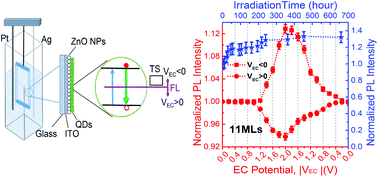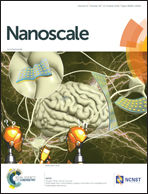Effect of surface/interfacial defects on photo-stability of thick-shell CdZnSeS/ZnS quantum dots†
Abstract
High color-purity CdZnSeS alloy cores and CdZnSeS/ZnS core/shell quantum dots (QDs) with 3, 11 and 17 monolayer (ML) ZnS shells are synthesized, and the narrow emission (full-width at half-maximum: ∼21 nm) is ascribed to the high size uniformity of QDs and the narrow linewidth of single QD spectra. Ultraviolet (UV) irradiation experiments show that the photo-stabilities of the samples improve remarkably with increasing shell thickness, but the photo-stability clearly decreases when the shell thickness is further increased to 17 MLs. Spectroelectrochemical (SEC) measurements indicate that the exciton recombination of QDs is mainly affected by surface electronic traps, and the interaction between exciton recombination centers and surface traps is significantly weakened with the increase in shell thickness due to the decreased wave function overlap of the exciton and surface traps. In the case of the 17 ML shell, the reduced photo-stability is due to increased interfacial defects caused by stress release during UV illumination, which can be proved by high-resolution transmission electron microscopy images and X-ray diffraction patterns. Furthermore, based on QDs’ theoretical mass calculations, a photo-stable white light-emitting diode is fabricated by encapsulating with a thick-shell QD, and an exceptional color gamut of 130% relative to the National Television Systems Committee color space can be achieved. Also, its colorimetry and photometry are discussed in detail.



 Please wait while we load your content...
Please wait while we load your content...